Soft Padeyes – light, strong and versatile
by Phil Anniss, upffront.com on 6 Sep 2016

Loop with Deck Busing upffront.com
Several types of soft padeyes are now available on the market and are proving increasingly popular over traditional stainless steel padeyes. They all capitalise on the incredible strength to weight ratio and abrasion resistance of Dyneema® which offers a reliable, robust, flexible and safe termination.
Soft padeye benefits:
- Super low weight and high strength compared to stainless alternatives
- No corrosion
- Less noise – very important for those long offshore legs in light winds
- Low profile
- Better load transfer into deck – carry higher load on the same surface
- Self-aligning with direction of load which reduces fatigue
- Quick, simple and removable – easy inspection and maintenance
They can be used anywhere a traditional stainless padeye would be used e.g. deck attachment points for blocks, sheet leads, in/outhauls or simply tie down points.
At the very basic level, DIY soft padeyes on dinghies and small keel boats are very quick and simple to achieve. A simple soft shackle which closes with a diamond knot can be fed through a small hole in the deck, coach roof or interior bulkhead to leave the loop exposed on the other side. For a fixed loop above deck you can use the rope shackle open i.e. just a loop with a diamond knot at the end. Or, with a longer shackle and a slightly bigger hole, it can be used to attach a block above deck and the end of the loop passed back below deck and closed with the diamond knot for a very neat, flexible termination. Sealant can be used to fix the knot in place and fill the hole to prevent water ingress.
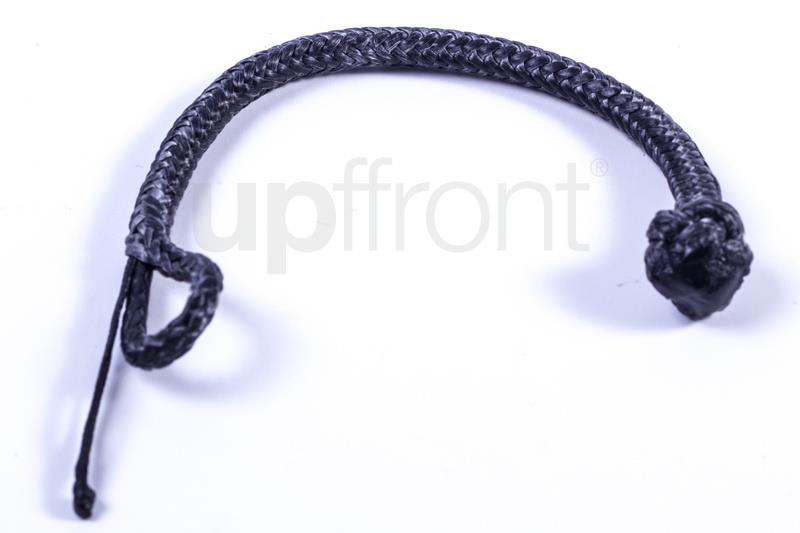
Ropeye also has a very convenient, low load option (50 kg SWL) for non-structural (mainly internal) attachment points. A Dyneema® loop (3mm line by 30mm long) is bonded in to a small carbon disk which can be glued/bonded onto any flat surface.
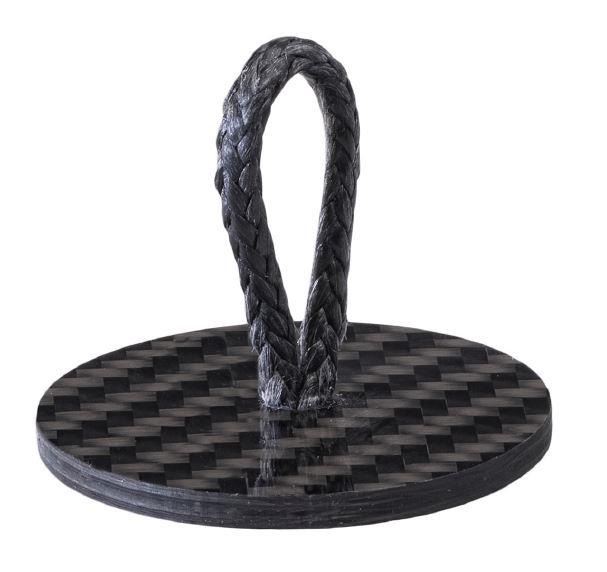
Next up the scale and with only a small additional cost, a simple, anodised aluminium through deck bushing can be added to the bare shackle solution. This removes any risk of abrasion of the deck/coach roof laminate and creates a nicer bearing surface for the loop shackle at deck level. The result is a professional looking finish above deck, better abrasion resistance for the loop and better load transfer into the deck/coach roof laminate.
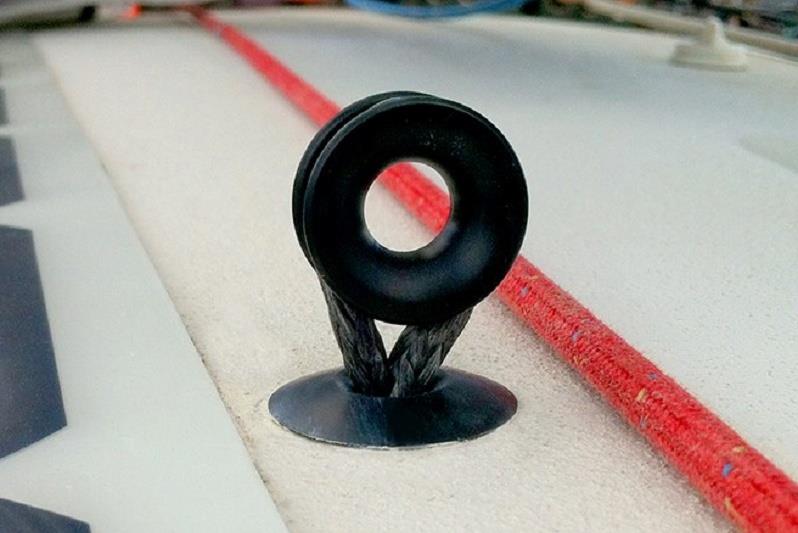
The Ropeye Loop offers a very neat, low profile and professional alternative to the below deck termination. The Dyneema® Loop is terminated in a carbon disk which can be lightly fixed in place, underdeck, with sealant. Add a through deck bushing to this (Ropeye PRO) and you have a very professional looking deck padeye solution, both inside and out, for relatively little cost.
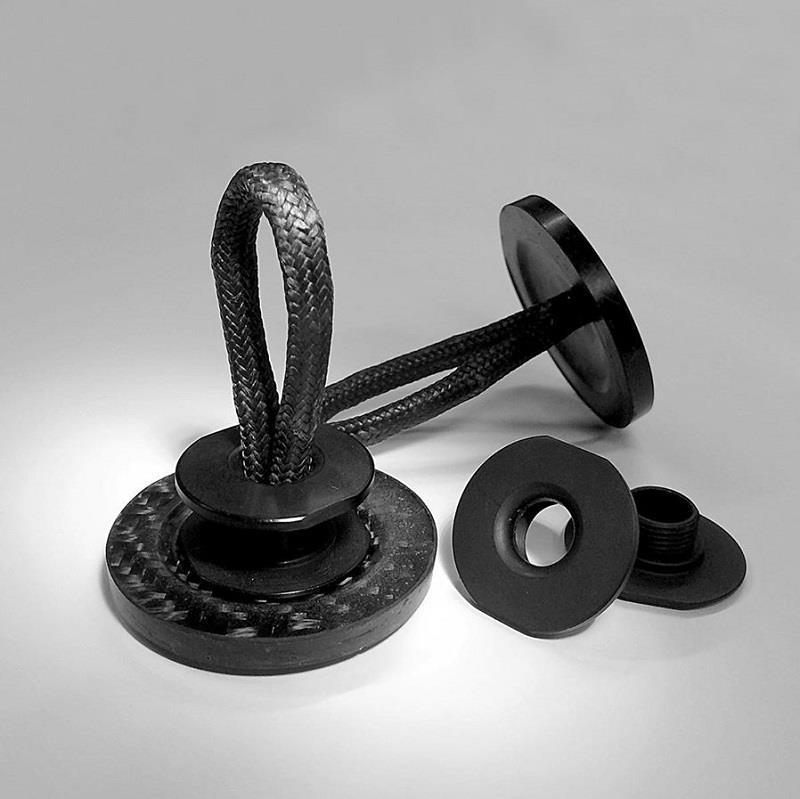
The above solutions, mainly using 4-6mm SK78 single braid Dyneema® loops, will provide super lightweight padeyes with a Safe Working Load (SWL) of up to approx. 2,000 kg. However, above this, there are a range of options for fully watertight soft padeyes for use with separate Dyneema® loops with working loads up to 7,000 – 10,000 kg.
With a few variations, these generally involve a two piece, anodized alloy, threaded through deck bushing with flanges above and below deck. The loop is terminated with a dogbone seated in the lower flange and an O-ring sealed cap provides a 100% watertight solution. Quick and simple removal of the loop allows regular inspection and maintenance.
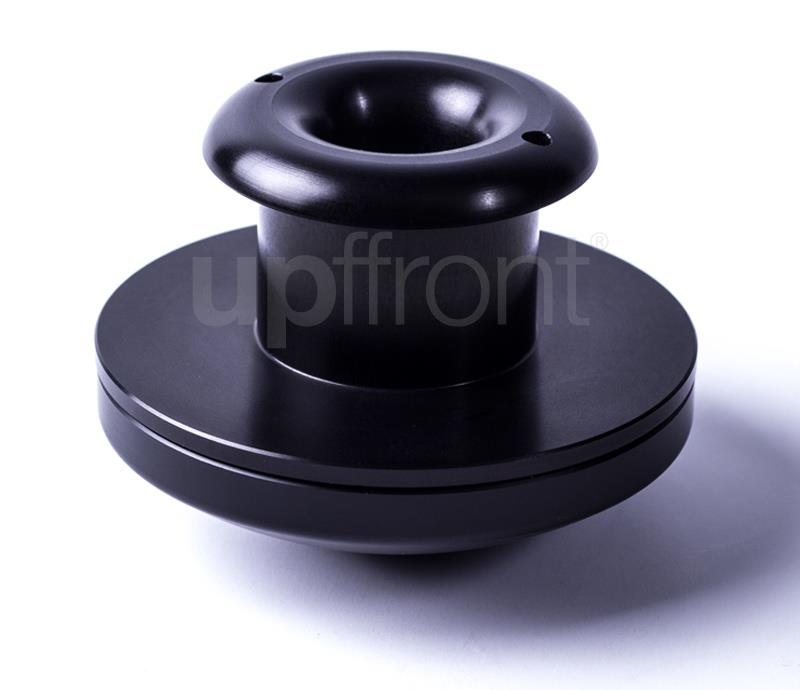
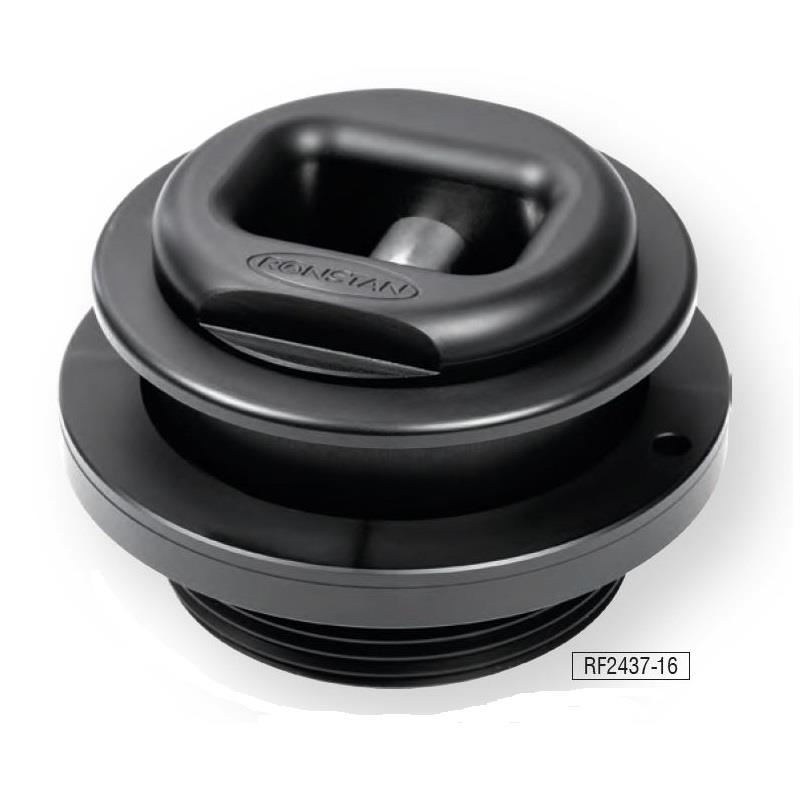
Rigging Projects (
www.riggingprojects.com) is a specialist company in composite mast and rigging technology. Founder, Tobias Hochreutener is very active on the Maxi72 circuit: 'Soft padeyes have revolutionised how we attach all manner of things on race boats. They are very light, easy to install and, best of all, self-aligning. Beyond the obvious application where the soft padeye has replaced the more traditional folding or fixed stainless version on deck, there are many more applications which are not immediately obvious.
In low load applications, their uses are literally infinite. On race boats, you will find the glue-on variety holding up pipe-cotes, toilet curtains, anchor and safety equipment lash points, rudder angle limiters and oilskin hangers – literally anything! Best of all, you can buy these off the shelf and you don't need to be a trained boat builder to install them. Follow the simple instructions and you are good to go!'
Conclusion
Soft padeyes are used extensively on race boats but are increasingly being used for cruising applications. Saving a significant amount of weight and being stronger than traditional stainless steel alternatives they offer lighter, faster and safer sailing – a win-win scenario for any sailing enthusiast.
About Upffront.com
Upffront.com offers an extensive range of sailing hardware and rigging systems online for customers worldwide. Our focus is on sailing systems and our aim is to improve knowledge and accessibility to the latest developments in lightweight, composite rigging and promote lighter, faster, safer sailing for boats of all shapes and sizes from dinghy's to superyachts. For more information visit
www.upffront.com or e-mail
support@upffront.com
If you want to link to this article then please use this URL: www.sail-world.com/147938